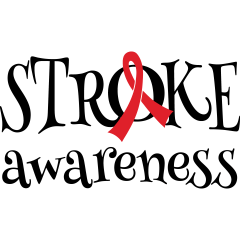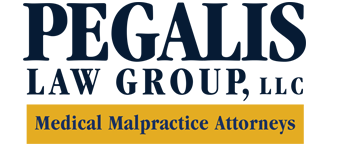-
The Causes of Cerebral Palsy
The underlying cause of cerebral palsy is damage to the brain or the abnormal development of the brain. In some cases, a baby’s brain may sustain damage because of birth injuries, which might be the result of medical malpractice. Birth complications such as uterine rupture, umbilical cord problems, and the detachment of the placenta can increase the risk of cerebral palsy.
 It’s also possible that a doctor will fail to diagnose serious conditions, and fail to treat them properly or quickly enough. For example, jaundice of the newborn or infections during pregnancy can result in brain damage if not treated. Less commonly, cerebral palsy may be acquired after 28 days of life. Acquired cerebral palsy may be caused by brain infections like meningitis or by brain injuries.
It’s also possible that a doctor will fail to diagnose serious conditions, and fail to treat them properly or quickly enough. For example, jaundice of the newborn or infections during pregnancy can result in brain damage if not treated. Less commonly, cerebral palsy may be acquired after 28 days of life. Acquired cerebral palsy may be caused by brain infections like meningitis or by brain injuries. Was your child diagnosed with cerebral palsy because of medical malpractice? Call Pegalis & Erickson, LLC at (516) 684-2900 to speak with a birth injury lawyer on Long Island, New York.
-
What Is Sepsis?
Sepsis, also known as blood poisoning, is a serious illness that may become life-threatening if it is not treated properly. It’s possible for patients with sepsis to suffer the failure of multiple organ systems. In some cases, acquiring or dying from sepsis may be the result of medical malpractice. For example, a physician may fail to diagnose and treat sepsis in a timely manner. If you or a loved one has been affected by a potential act of medical negligence, you can contact an attorney to discuss your options.
 Causes of Sepsis
Causes of Sepsis
It’s often thought that sepsis is an infection, but actually, it’s a complication of an infection. Sepsis may result from bacterial, fungal, or viral infections. Most often, it’s a complication of pneumonia, bloodstream infections, or kidney or abdominal infections. Sepsis can develop when the immune system tries to fight the infection and, in doing so, triggers systemic inflammation. Some patients are at a higher risk of sepsis than others, including older adults and people with a weakened immune system. Sepsis cases often involve patients who were hospitalized in the intensive care unit. Patients with any sort of invasive devices, such as catheters or breathing tubes, are also at an increased risk.Signs and Symptoms of Sepsis
Sepsis is a progressive problem that is best treated in its first stage. A diagnosis of sepsis can be made when a patient has an infection and a rapid heartbeat, high respiratory rate, or abnormal body temperature. The second stage, severe sepsis, may indicate an imminent organ failure. It involves one or more of the following symptoms:- Abrupt change in mental status
- Abdominal pain
- Difficulty breathing
- Low platelet count
- Atypical heart function
- Little to no urine
The third stage, septic shock, has a poor prognosis, particularly when it isn’t detected and treated immediately. Septic shock is diagnosed when a patient has already been diagnosed with severe sepsis and also has very low blood pressure.
Pegalis & Erickson, LLC is a malpractice law firm on Long Island, New York that routinely handles cases such as hospital-acquired infections. Our medical negligence lawyers encourage patients to contact us for a complimentary case review. You can reach us at (516) 684-2900 to discuss your potential medical malpractice case.
-
Accurately Diagnosing Stroke
By designating May as American Stroke Month, the American Stroke Association aims to raise awareness about the critical importance of early detection and treatment of this life-threatening medical event. It’s crucial for patients to learn how to be their own healthcare advocates, given the risks of medical malpractice in stroke cases that may result in wrongful death.
Detecting the Signs of Stroke
The accurate diagnosis of stroke begins with the patient’s recognition of the potential signs and symptoms of stroke. These symptoms include:- One-sided weakness, numbness, or paralysis
- One-sided facial drooping
- Confusion
- Excruciating headache
- Dizziness
- Slurred speech
- Impaired coordination
- Difficulty walking
 Diagnosing or Misdiagnosing Stroke at the ER
Diagnosing or Misdiagnosing Stroke at the ER
One of the reasons why doctors may fail to diagnose stroke properly is that some of the symptoms can mimic other health conditions, such as the following:- Seizure
- Hypoglycemia
- Systemic infection
- Migraine
- Dementia
- Alcohol intoxication
However, because of the life-threatening nature of stroke, it’s imperative that doctors do consider the possibility of stroke when a patient presents with certain symptoms. Doctors ought to avoid emergency room errors by performing some of the following diagnostic exams and tests to check for stroke.
- Physical exam
- Medical history review
- Symptom review
- Blood tests
- Computerized tomography (CT) scan
- Magnetic resonance imaging (MRI) scan
- Carotid ultrasound
- Cerebral angiogram
- Echocardiogram
If a patient suffers a stroke that goes undiagnosed or is misdiagnosed, a medical malpractice lawyer will consider whether the doctor was negligent in failing to order any of these tests.
Getting Prompt Treatment for Stroke
An accurate diagnosis is crucial for administering the correct treatment. Most strokes are ischemic strokes, which are caused by an obstruction of blood flow to the brain. To clear the obstruction, emergency room doctors can administer powerful clot-busting drugs. However, if these drugs are administered to patients who are actually suffering a hemorrhagic stroke, the result could be disastrous because it will increase bleeding on the brain.If someone in your family may have been affected by emergency room errors on Long Island, New York, you can find the answers you’re looking for at Pegalis & Erickson, LLC. We are a malpractice law firm committed to protecting the legal rights of patients and their families. Reach out to us today at (516) 684-2900 and let us know how we can help you.
-
The Risk of Misdiagnosis in Young Heart Attack Patients
There are many different types of medical malpractice, including misdiagnosis. If a misdiagnosis occurs as an emergency room error, the results may sometimes be fatal. Patients can be strong advocates for their own healthcare by knowing the risks of failure to diagnose heart attacks. The misdiagnosis of heart attacks affects young patients in particular simply because most heart attack patients are of older age. When a younger patient walks into an ER complaining of chest pain, an ER doctor might be more likely to evaluate that patient for panic attacks.
 Further complicating this issue is the misconceptions regarding heart attack symptoms. It’s often thought that heart attacks primarily cause chest, left shoulder, and left arm pain. However, some heart attacks might not cause chest pain at all. Instead, young patients may experience jaw pain, nausea, vomiting, and dizziness.
Further complicating this issue is the misconceptions regarding heart attack symptoms. It’s often thought that heart attacks primarily cause chest, left shoulder, and left arm pain. However, some heart attacks might not cause chest pain at all. Instead, young patients may experience jaw pain, nausea, vomiting, and dizziness. If you’ve lost a loved one to wrongful death on Long Island, New York, or you were injured by a misdiagnosis, you can count on Pegalis & Erickson, LLC to advocate for your legal rights. Call us at (516) 684-2900 to request a case review with one of our experienced medical malpractice lawyers.
Recent Posts
Popular Posts
categories
- Uncategorized
- Infographic
- Patient Safety
- Patient Health
- Stillbirth
- Birth Injuries
- Medical Malpractice
- Medical Negligence
- Event
- Erb's Palsy
- Injury
- ER
- Video
- Cancer Misdiagnosis
- Medication Errors
- Cerebral Palsy
- Medical Negligence Lawyer
- Anesthesia Injuries
- Brachial Plexus
- Prostate Cancer
- About Us
- Men's Health
- Skin Cancer
- Breast Cancer
- Misdiagnosis
